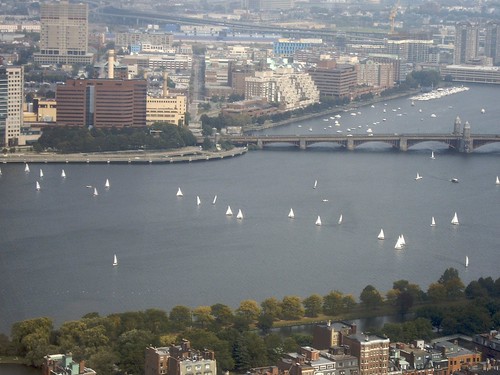If you’re a habitual reader of the environmentalist news stream, as I am, you notice that much of the discussion about climate change pertains to the urgent need for reducing global greenhouse gas emissions. It’s a focus that’s well-warranted given both the huge scale and urgent timing of emissions reductions that are necessary to lessen (or ‘mitigate’) the amount of warming that occurs and avoid the severest impacts.
The flip-side of the climate science picture is the undoubtedly gloomy understanding that a certain amount of future warming is unavoidable regardless of how quickly emissions are drawn down. It’s in the spirit of realism and responsibility—not defeatism—then, that people are beginning to think about how we should prepare ourselves for the coming climatic changes. In the lingo of climate policy thinkers, this type of planning is called ‘adaptation.’

Low-lying areas along the Esplanade are at risk for more storm flooding as global sea levels rise
Serious adaptation planning is starting to move from an academic exercise to one that various levels of government are undertaking. Large cities—particularly ones situated on coastlines—have led the way. New York, San Francisco, Seattle and Miami, among others, have set the adaptation wheels in motion.
The City of Boston is following in their footsteps; in their recently published climate plan, they made it a goal to “give adaptation the same priority as mitigation,” and mentioned that a comprehensive adaption study is in the works. The State of Massachusetts, under the 2008 Global Warming Solutions Act, established an Advisory Committee of experts and stakeholders to report on and make recommendations regarding adaptation to the Executive Office of Energy and Environmental Affairs. Kathleen Baskin, manager of this committee, informed me that their first report, provisionally entitled the Massachusetts Climate Adaptation Plan, is now under review and should be published by late summer. The report will include a qualitative assessment of the state’s vulnerability to climate change and provide strategies for response under several predicted climate scenarios.
Last week, I sat down with John Bolduc, an environmental planner for the City of Cambridge, to learn about how the city is moving forward with adaptation. When the city began climate planning in 1999 with a resolution to join ICLEI’s Cities for Climate Protection program, attention was squarely on the potential for reducing Cambridge’s carbon footprint—that is, mitigation. And until the past couple of years, it remained this way, whether for fear that adaptation would divert attention and resources from mitigation or hope that civilization would be on course to avert crisis by now. Last year, Cambridge (in addition to Boston) was one of the inaugural cities in ICLEI’s new Climate Resilient Communities program.
The first step in the process is to conduct a vulnerability assessment, which involves analyzing climatic threats to Cambridge in detail. The Climate Protection Action Committee (CPAC), which advises the City Manager on climate change issues, presented some general vulnerability findings to him last year in a recommendation for a full assessment. Sea level rise—which is currently expected to be 1 to 2 meters by 2100—presents a major risk to Cambridge in the form of storm surge flooding from Boston Harbor. In the present climate, the Charles River Dam protects Cambridge against coastal storms that have more than one percent chance of happening in any year. By the middle of the century, the Charles River Dam and other coastal defenses could be overwhelmed regularly by sea level rise and coastal storms. A scenario involving sea level rise of 2 feet, a moderate estimate, and a current 100 year storm would see the Charles River Dam and other coastal barriers overtopped. In addition to sea level rise, direct effects on public health are expected—more hot summer days and nights (made worse by the urban heat island), increased ground-level ozone (smog) formation, and greater risk for insect-borne diseases are just a sampling of concerns articulated by CPAC. According to Mr. Bolduc, City Manager Healy has already acted on CPAC’s recommendation and the City will be starting a vulnerability assessment this summer.
Looking forward, Mr. Bolduc emphasized that potential adaptation measures shouldn’t be looked at in isolation—that is to say, adaptation strategies are not only about protecting citizens and infrastructure from climatic hazards. For example, tree-planting and ‘green roofs,’ which can help buildings stay cool in the summer, are also helpful for air quality—a ‘co-benefit’ of action. A city must be looked at holistically for the interconnected social-ecological-economic system that it is. The bottom line is that climate change adaptation planning is really a continuation of what the City already does to reduce and manage risks to the community from a range of potential threats. In the past we could count on a relatively stable climate, but now we have to expect conditions will change. To Mr. Bolduc, the goal is to make Cambridge a more “resilient” city.
